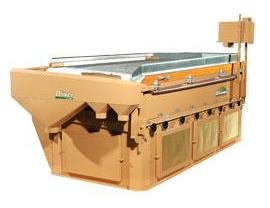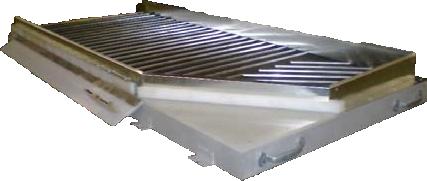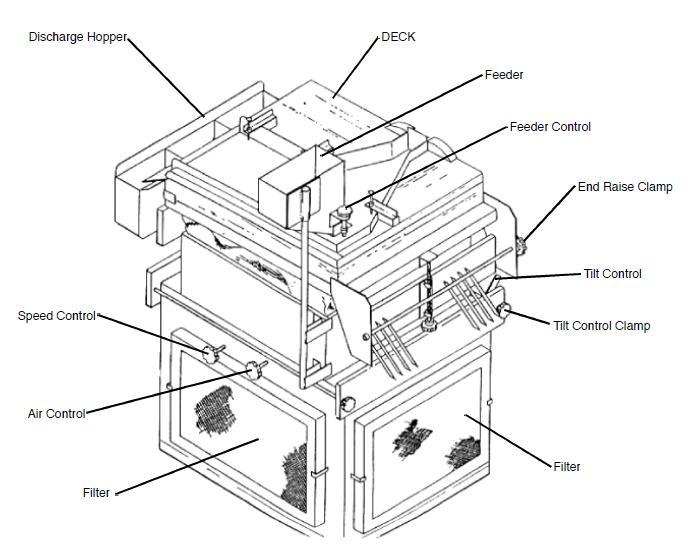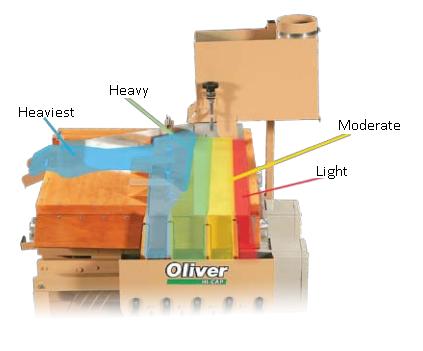Gravity separators classify dry, granular, free-flowing particles based on their specific gravity.

General Information
Gravity separators, or air tables, separate particles with very close specific gravities.
The particles are fed onto a large, slotted deck that is tilted slightly, as shown here. The deck vibrates and fans force air upward. Denser particles travel to the high side of the deck, while lighter particles roll off the low side. Hoods are sometimes used to protect surrounding areas from dust.

Equipment Design
During operation, material flows through the feeder, onto the vibrating deck. The vibrator shakes the material at a frequency of 200 to 600 cycles per minute, while fans force air upward through the particles. A diagram of a laboratory-scale gravity separator is shown below with its key parts labeled.

The airflow and vibration cause the bed of material to fluidize. As this happens, gravity causes the denser particles to fall into riffles on the deck, while lighter particles land on top of the dense ones.
The vibrating motion of the deck causes the heavy particles to move upward between the riffles, toward gates on the higher side of the bed. The lighter particles roll down, over the heavy particles, and are collected on the low side of the deck in the discharge hopper.
The deck schematic below shows an overhead view of the ideal deck operation. The particles fall into layers in the stratifying zone, then continue across the table to be separated. The size of the stratifying zone depends on the difficulty of the separation.

A set of controls are used to adjust the deck tilt, vibration frequency, airflow rate, and feed flow rate. This allows the unit to efficiently separate many different types of materials.
Usage Examples
Gravity separators are most often used in seed and grain operations. Stones, damaged or unfilled seeds, and other impurities can easily be removed, increasing the percentage of material that will germinate. The video below shows stones being removed from woodchips. Often they are used in series when a pure finished product is desired.
Gravity separators are also used in applications such as coffee bean production and insulation production.
Advantages
- Extremely effective separation method for smooth particles of similar size
Disadvantages
- Not effective for particles of varying size or non-flowing materials
- A clean air source required
Acknowledgements
- Oliver Manufacturing Company, Inc., Rocky Ford, CO
References
- Orr, Clyde. Particulate Technology. New York: The MacMillan Company, 1966. Print.
- Rumpf, Hans. Particle Technology. Trans. F. A. Bull. New York: Chapman and Hall, 1990. Print.
- Seville, Jonathan; Ugur Tuzun and Roland Clift. Processing of Particulate Solids. New York: Chapman and Hall, 1997. Print.
Developers
- Michael Fein
- Kelsey Kaplan
